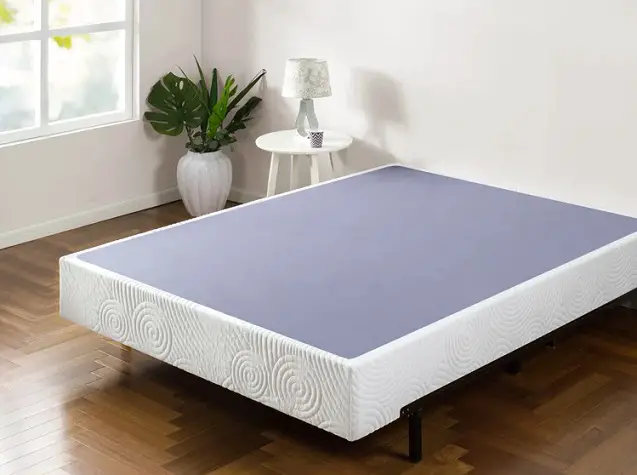In the world of cosmetic treatments, Botox injections have become increasingly popular for their ability to reduce wrinkles and restore a more youthful appearance. However, one lingering question that often arises after receiving this treatment is when can you safely resume your regular sleeping position, particularly on your side? This article will explore the aftercare guidelines and provide insights into the factors to consider before comfortably settling into a cozy slumber on your side, allowing you to wake up refreshed and revitalized without compromising the results of your Botox treatment.
Table of Contents
What is Botox?
Botox is a cosmetic treatment that involves injecting a toxin called botulinum toxin type A into the muscles to reduce the appearance of wrinkles. It works by temporarily paralyzing the muscles, which smooths out the skin and gives a more youthful appearance. Botox is most commonly used to treat wrinkles on the forehead, around the eyes (crow’s feet), and between the eyebrows (frown lines).
The Effects of Botox
Immediate Effects
After receiving a Botox treatment, you may notice some immediate effects. These effects can include a slight redness or swelling at the injection site, but these typically subside within a few hours. The muscles in the treated area will gradually begin to relax, reducing the appearance of wrinkles over the next few days.
Long-Term Effects
The long-term effects of Botox can vary from person to person. On average, the results of a Botox treatment can last anywhere from three to six months. Over time, the effects of the treatment will gradually wear off, and the muscles will regain their normal function. However, with repeated treatments, the muscles may become trained to relax and the wrinkles may become less pronounced, resulting in longer-lasting results.
Sleeping Positions and Botox
Sleeping position can play a role in the effectiveness and longevity of your Botox treatment. It is generally recommended to avoid sleeping on your side immediately after receiving Botox injections. This is because sleeping on your side can put pressure on the treated areas and potentially cause the Botox to migrate to other muscles, resulting in uneven results.
Why Should You Avoid Sleeping on Your Side After Botox?
There are several reasons why you should avoid sleeping on your side after receiving Botox. Firstly, the pressure placed on the treated areas can cause the Botox to spread to unintended muscles, which can lead to undesirable effects. Additionally, the friction between your face and the pillow while sleeping on your side can irritate the injection sites and potentially worsen any side effects, such as bruising or swelling.
How Long Should You Wait Before Sleeping on Your Side After Botox?
The length of time you should wait before sleeping on your side after receiving Botox can vary depending on the individual and the specific instructions provided by your doctor. However, there are some general guidelines to follow:
Consult with Your Doctor
Before making any decisions about your sleeping position post-Botox, it is essential to consult with your doctor. They will be able to provide personalized advice based on your specific situation and treatment. Your doctor may recommend waiting a certain amount of time before sleeping on your side to ensure optimal results.
Follow Post-Treatment Instructions
Following the post-treatment instructions provided by your doctor is crucial for achieving the best outcomes. These instructions may include guidelines on when you can resume normal sleeping positions. It is important to follow these instructions carefully to avoid any complications or adverse effects.
Avoid Pressure and Friction on the Treated Areas
Even after your doctor gives the green light to sleep on your side, it is still important to be mindful of the pressure and friction applied to the treated areas. Consider using a soft pillow or a neck pillow for support to minimize the contact between your face and the pillow. This can help reduce the risk of any complications and ensure the longevity of your Botox results.
Tips for Sleeping Comfortably After Botox
If you prefer to sleep on your side but want to ensure a comfortable and safe slumber after receiving Botox, here are some tips to consider:
Use a Soft Pillow
Using a soft pillow can help reduce the pressure and friction on the treated areas. Look for a pillow that provides adequate support while still being gentle on your skin. Avoid using firm or overly textured pillows that may irritate the injection sites.
Try Sleeping at an Incline
Sleeping at an incline, such as with a few extra pillows propping you up, can be a good alternative to sleeping on your side. This position helps reduce the likelihood of the Botox migrating to unintended muscles and minimizes the risk of pressure on the treated areas.
Consider Sleeping on Your Back
Sleeping on your back is generally considered the most optimal sleeping position after receiving Botox. This position distributes the weight of your head evenly, reducing the pressure on any specific area. It also minimizes the risk of friction and irritation on the injection sites.
Use a Neck Pillow for Support
If you find it uncomfortable to sleep on your back, using a neck pillow for support can help. This type of pillow provides cushioning for your neck and shoulders, helping to keep your head from rolling onto its side. It can also help maintain a more neutral spine alignment, promoting overall comfort during sleep.
Other Considerations for Sleep Post-Botox
Aside from your sleeping position, there are other considerations to keep in mind to ensure a restful and safe sleep after receiving Botox. These include:
Managing Side Effects
It is common to experience some side effects after a Botox treatment, such as headaches, bruising, swelling, or droopy eyelids. If you are experiencing any of these side effects, it is important to follow up with your doctor for proper management. They may recommend specific treatments or advice to alleviate these symptoms.
How to Maintain Your Botox Results
To maintain the results of your Botox treatment and extend its longevity, there are a few steps you can take:
Follow-up Treatments
Botox treatments are not permanent, and the effects will gradually wear off over time. To maintain the desired results, it is important to schedule follow-up treatments as recommended by your doctor. These treatments will help maintain the relaxation of the muscles and the reduction of wrinkles.
Avoid Certain Medications and Supplements
Some medications and supplements, such as blood thinners or aspirin, can increase the risk of bruising or bleeding after a Botox treatment. It is important to inform your doctor of any medications or supplements you are taking prior to the treatment to avoid any potential complications.
Protect Your Skin from the Sun
Exposure to the sun’s rays can break down the collagen and elastin in your skin, which can accelerate the aging process and lead to the formation of wrinkles. It is important to protect your skin from the sun by wearing sunscreen, a wide-brimmed hat, and sunglasses, even after receiving Botox treatments. This will help maintain the results and prevent new wrinkles from forming.
Conclusion
In conclusion, sleeping positions can impact the effectiveness and longevity of your Botox treatment. It is generally recommended to avoid sleeping on your side immediately after receiving Botox injections to prevent the migration of the toxin and potential uneven results. It is important to consult with your doctor for personalized advice on when it is safe to resume sleeping on your side. Following post-treatment instructions, using supportive pillows, and making lifestyle adjustments can help ensure a comfortable and successful recovery after Botox. By understanding the proper care and considerations for sleep post-Botox, you can enjoy the full benefits of your treatment and maintain your desired results.



